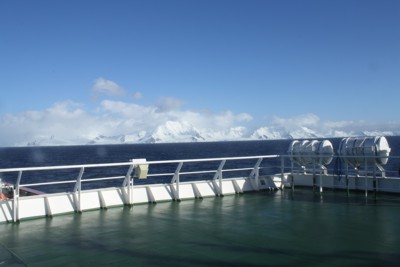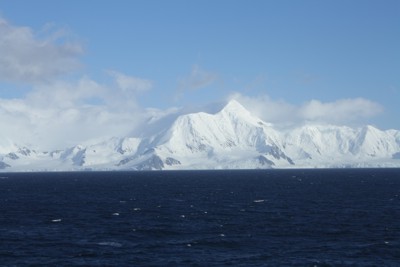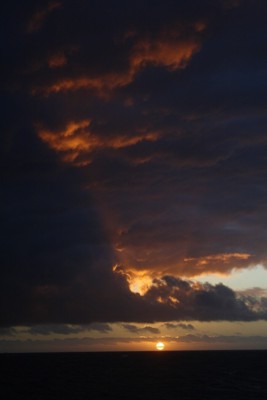Wednesday 2nd February
Today's contributor: Catherine Cole
Strong winds over night had swept away the thick fog of yesterday, leaving us with a breathtaking view this morning of Livingston Island, the most westerly of the South Shetland Islands. Blanketed in deep snow, the impressive peaks showed vast avalanche trails carving their way unnervingly to the valleys below. It was a glorious start to the day, and perfect weather for spotting humpback whales and seals.

Livingston Island from the bow deck of the RRS James Cook

Livingston Island in the morning sun
Today we steamed back to Hook Ridge, in the eastern Bransfield Strait, to collect some more samples of water and sediment in areas that had seemed interesting from our previous surveys. Using very sensitive chemical sensors, we have been able to trace signals of hydrothermal activity here and we hope to enhance our understanding of this region further by analysing these samples in our labs on board.
Science on the RRS James Cook each day is a 24-hour operation, which we divide into four watches, each lasting for 6 hours. For those working on the night shifts, the strange meal times and sleeping patterns are more than compensated for by the magnificent sunsets and sunrises. As we roll on into February, the days are beginning to shorten and the nights are much darker than they were at the start of our expedition. The photo below depicts a particularly spectacular sunrise at 4am over perfectly calm seas in the Bransfield Strait.

Sunrise over Bransfield Strait
